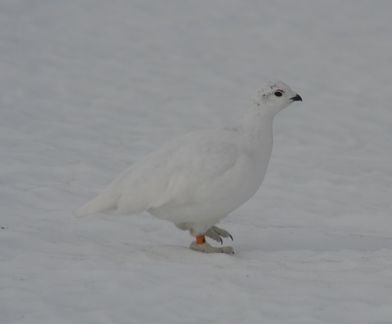Distribution Assessment of White-tailed Ptarmigan in Washington
|
White-tailed ptarmigan (Lagopus leucura) are habitat specialists, with their distribution in the western U.S. typically limited to high-elevation montane sky islands of upper subalpine and alpine zones. The Mt. Rainier subspecies (L. l. rainierensis) of the Washington Cascades is one of two subspecies in the coterminous U.S. that is currently under review by U.S. Fish and Wildlife Service for potential listing under the federal Endangered Species Act of 1973. The most important threat to white-tailed ptarmigan is loss of sensitive alpine ecosystems due to climate change (e.g., loss of alpine-zone habitat through elevational increase of timberline).
Although very few data have been collected to assess population range and distribution of ptarmigan in Washington, the Washington Department of Fish and Wildlife (WDFW) has accumulated >800 sightings records of white-tailed ptarmigan since 1921, with about half of these records collected during 2000–present. Using these data, we are working with Dr. Michael Schroeder of WDFW to estimate the probability of presence of ptarmigan to various independent environmental variables using MaxEnt software (based on the maximum entropy algorithm). By parsing sightings data into temporal intervals, we can quantify the spatial distribution of the white-tailed ptarmigan population, determine predictors for probability of ptarmigan presence, and assess potential distributional changes of ptarmigan in Washington. Additionally, using thresholds of probability of presence as an index for habitat, we can quantify the area of potentially available habitat for ptarmigan. |
Copyright 2024 Wildlife Ecology Institute
Copyright 2024 Wildlife Ecology Institute


